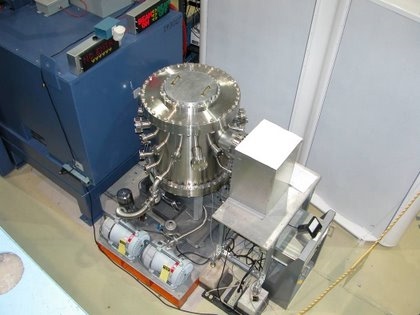| * |
|
Neutron Depth Profiling
Description:Neutron Depth Profiling (NDP) is a nondestructive analytical technique for measuring the concentration profile of certain light elements as a function of depth. The concentration profile in the first few micrometers of a surface is determined by analyzing the energy spectrum of charged particles promptly emitted following neutron capture by the element. For an overview, see: Downing, R.G., and Lamaze, G.P., Langland, J.K., and Hwang, S.T., “Neutron Depth Profiling: Overview of the NIST Facilities” NIST Journal of Research, 98(1) (1993) 99. (PDF) Additional publications available upon request. Specifications / Capabilities:Technique: Neutron Depth Profiling (NDP) measures elemental concentration profiles up to a few micrometers in depth for elements that emit a charged particle following neutron capture. Elements Analyzed: boron, lithium, helium, nitrogen and several additional light elements with less sensitivity. Sample Environment: In an evacuated chamber, samples are irradiated with a beam of low energy neutrons. A small percentage of the emitted reaction particles are analyzed by surface barrier detectors to determine their number and individual energies. Principles: The emission intensity is compared to a known standard to quantitatively determine the elemental concentration. The emitted particles lose energy at a predicable rate as they pass through the film; the total energy loss correlates to the depth of the reacting nucleus. Advantage: NDP is non-destructive. NDP analysis allows repeatedly determinations of the sample volume following different treatments. Neutron beam flux at sample: 7.5x108 n/cm2-s Beam area: from a few mm2 to 110 mm2 These are the primary reactions potentially available for NDP applications. Scientific Opportunities / Applications:Fusion Reactor Wall Annealing Study by NDP The primary tungsten enclosure wall of a fusion reactor receives a large flux of energetic He ions during the fusion process. Accumulation of He leads to bubble formation that increase in number and size leading to the release of W metal particles into the chamber. An annealing protocol is needed to avert wall damage and maintain fusion efficiency. ORNL, ONR, UNC, & NIST are developing an annealing protocol to release implanted He preventing damage to the tungsten containment wall. Tungsten coupons are implanted at energies comparable to the expected "threat" conditions in a fusion chamber. Some coupons were provided "as is," others are subjected to various heat-time cycles. NDP is being used to assess the implantation energy, dose, and affect of annealing. The figure shows NDP determinations of 3He profiles used to calibrate the process Access Information:Contact Dr. Greg Downing at 301-975-3782. Associated Programs/Projects:
|
 An overhead view of the NDP system located at the NIST Center for Neutron Research. A small diameter neutron beam passes through the blue shielding at the upper left and passes through the stainless steel chamber. Contact
Name: Greg Downing |
